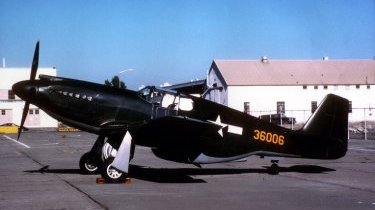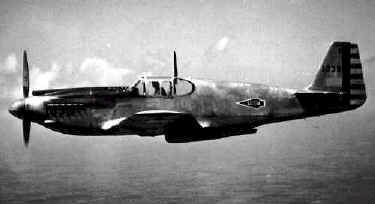|
|
|
| The
P-51 was designed as the NA-73 in 1940 at Britain's request. The
design showed promise and AAF purchases of Allison-powered Mustangs
began in 1941 primarily for photo recon and ground support use due to
its limited high-altitude performance. But in 1942, tests of P-51s
using the British Rolls-Royce "Merlin" engine revealed much
improved speed and service ceiling, and in Dec. 1943, Merlin-powered
P-51Bs first entered combat over Europe. Providing high-altitude
escort to B-17s and B-24s, they scored heavily over German
interceptors and by war's end, P-51s had destroyed 4,950 enemy
aircraft in the air, more than any other fighter in Europe. |

North American P-51A |
| Mustangs
served in nearly every combat zone, including the Pacific where they
escorted B-29s to Japan from Iwo Jima. Between 1941-5, the AAF ordered
14,855 Mustangs (including A-36A dive
bomber and F-6 photo recon versions), of which 7,956 were P-51Ds.
During the Korean War, P-51Ds were used primarily for close support of
ground forces until withdrawn from combat in 1953.
SPECIFICATIONS
PERFORMANCE
|
|
